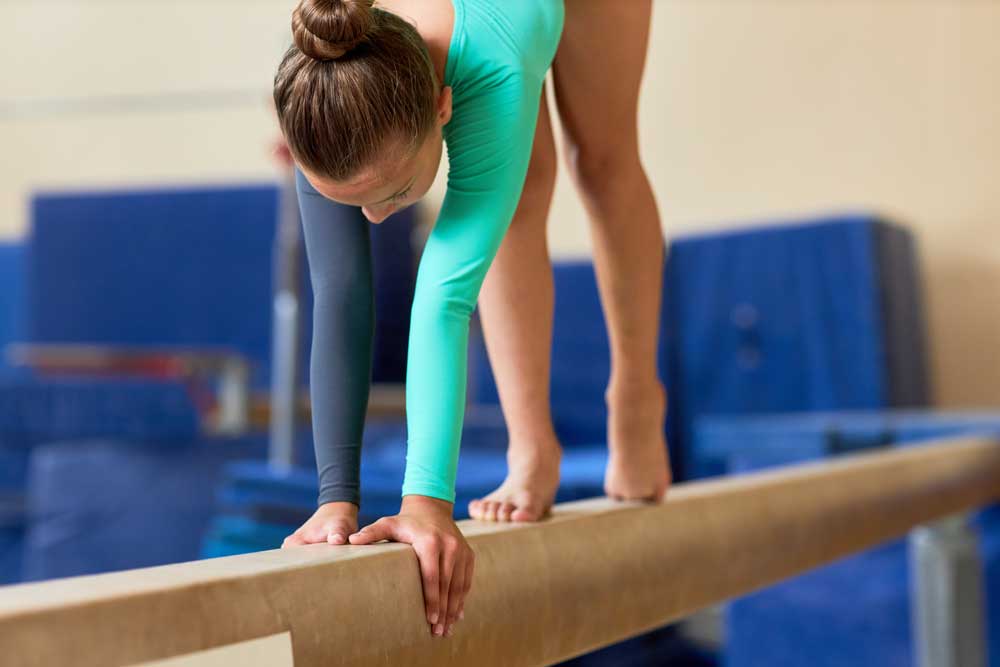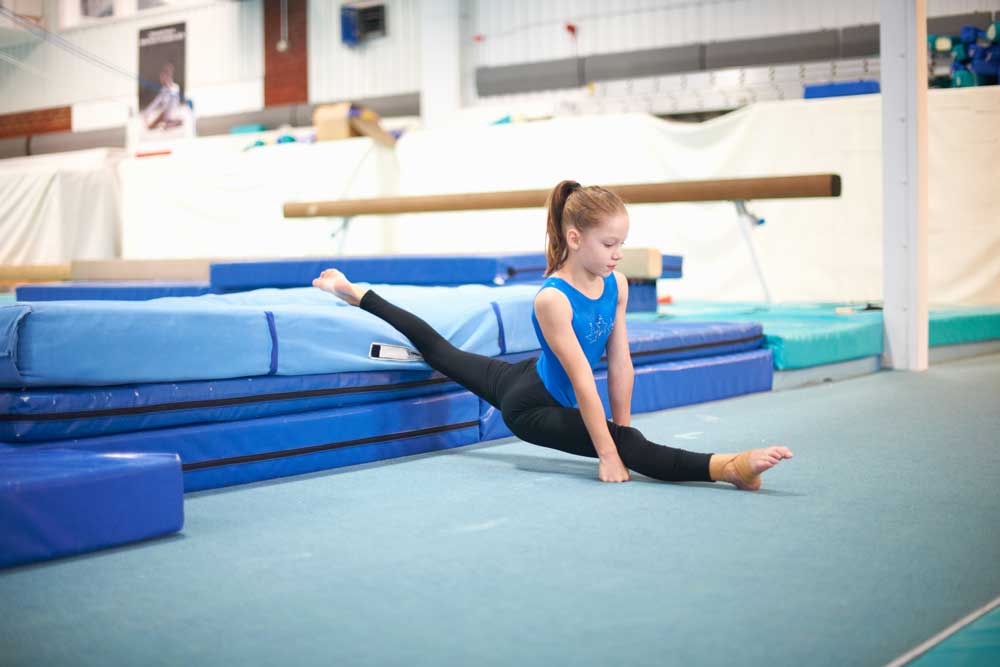Wishing to advance your gymnastics abilities to an unprecedented level? Consider moving the gym into your own residence if this is the case. A home gymnastics beam is a crucial piece of apparatus that can assist you in perfecting those flawless routines. How, then, do you determine which option is the finest when so many exist?
Choosing and installing the ideal home gymnastics beam will be the subject of this article’s instructions. We’ll assist you in locating a gymnasium beam that fits your space, budget, and skill level, regardless of your gymnastics experience level (beginner to advanced).
From beam length and width to beam material evaluation and weight capacity, we will discuss every facet of selecting a home gymnastics beam. In order to ensure that you can practice with confidence, we will also offer guidance on the secure and safe installation of your beam.
Delight in the realm of home gymnastics beams and locate the ideal one if you are prepared to improve your abilities in the sport while remaining in the convenience of your personal space.
The Importance of a Home Gymnastics Beam
An aspiring gymnast must possess a home gymnastics beam as an essential piece of apparatus. It affords users a secure and convenient environment to hone and refine their abilities, permitting them to engage in training at their convenience. Having a home beam also grants you the flexibility to develop your gymnastics skills at your own pace, rather than requiring you to exclusively depend on gym or training centre access.
A domestic gymnastics beam not only provides convenience but also contributes to the development of self-assurance. One potential benefit of practicing on a familiar beam is the ability to surmount any apprehensions or doubts that may arise regarding the execution of routines on unfamiliar apparatus. It facilitates concentration on one’s technique and execution, thereby promoting accelerated progress.
In addition, a home gymnastics beam offers a designated area where one can engage in experimentation and attempt novel maneuvers. It provides an opportunity to develop one’s skill set and exercise one’s creativity without the constraints of a structured training setting. A home beam provides an opportunity to challenge one’s limits and achieve unprecedented heights throughout their gymnastics trajectory.
Types of Home Gymnastics Beams
A variety of shapes and sizes are available for use in home gymnastics beams. Your skill level, budget, and available space will all influence which beam is ideal for you. Common varieties of home gymnastics beams include the following:
- Low Balance Beams: Because they are closer to the ground, novice or young gymnasts primarily use these beams. They furnish an unsteady and secure platform for honing fundamental abilities and cultivating equilibrium. Fascinating beginnings are low-balance beams, which are frequently constructed from timber or foam.
- Folding Balance Beams: These beams are transportation and storage necessities fulfilled in one. Folding mechanisms enable the beams, which are typically constructed of vinyl or synthetic velour, to be collapsed when not in use. Versatile in length, folding balance beams are appropriate for gymnasts of all skill levels, including novices.
- Competition-style Balance Beams: These beams replicate the design and configuration evident in high-level gymnastics competitions. These beams offer a more genuine and demanding training experience compared to low-balance beams due to their length, height, and narrowness. Recommended for advanced gymnasts who wish to simulate competition conditions, competition-style balance beams are frequently constructed from wood or composite materials.
- Adjustable Balance Beams: These balance beams provide the user with the ability to personalise their training experience by adjusting the height. Metal frames and padded upper surfaces comprise the majority of their construction. As they can be adjusted in height to facilitate a variety of routines and progressions, adjustable balance beams are appropriate for gymnasts of all skill levels.
Having provided an overview of the various varieties of home gymnastics beams on the market, we shall now delve into the determinants that ought to guide your selection of the ideal beam.

Safety Considerations for Installing a Home Gymnastics Beam
For a secure and stable configuration, installing a home gymnastics beam necessitates meticulous attention to safety precautions. Maintain in mind the following critical safety considerations:
1. Space and Location
Select an area of your residence that is conducive to the beam’s placement and permits secure circulation in the vicinity of it. It is advisable to refrain from positioning the beam in close proximity to stationary objects such as walls, furniture, or anything else that may potentially cause harm during routine activities or accidents.
Prior to using protective matting or padding on the floor to provide additional cushioning in the event of falls, ensure that the area encircling the beam is devoid of any debris. Particularly for younger gymnasts or when attempting more advanced skills, it is also recommended to have an observer or a responsible adult present during training sessions.
2. Anchoring beams
It is crucial to securely anchor the beam in order to guarantee its stability and impede any potential shifting or sliding that may occur while working. As a means of securing the beam to the floor or carpet, numerous home gymnastics beams include Velcro straps or anchoring mechanisms.
Heavy-duty adhesive membranes or non-slip pads may be utilised to impede the movement of a beam devoid of these characteristics. In order to mitigate the potential for accidents or injuries, it is imperative to adhere to the manufacturer’s guidelines when effectively anchoring the beam.
3. Systematic Examinations
Irrespective of damage, instability, or symptoms of wear, your home gymnastics beam should be routinely inspected. Investigate the beam for any structural flaws, such as loose fasteners or fractures, that may jeopardise its integrity. Promptly cease usage and seek guidance from the manufacturer regarding repairs or replacements should any issues arise.
Debris that could impair the beam’s performance or traction must also be prevented from accumulating on it. Ensure the durability and security of your beam by adhering to the manufacturer’s cleaning and maintenance instructions.
You can practice home gymnastics beam safety with confidence that you have taken the requisite measures to reduce the likelihood of accidents or injuries by adhering to the following guidelines:.

How to correctly set up a Home Gymnastics Beam
Although the job of installing a home gymnastics beam might appear frightening, it can be accomplished with no trouble with the proper tools and method. The following instructions will assist you in installing your beam securely and safely:
1. Make the Area Ready
Prior to installing the beam, ensure the floor is devoid of any impediments and that the area is completely cleared. When utilising a folding or low-balance beam, unfold it and position it in the intended location.
When assembling a competition-style beam or an adjustable beam, adhere to the assembly instructions provided by the manufacturer. Ensure that every component is firmly affixed prior to continuing.
2. Establish the Beam
Utilise any Velcro straps or built-in anchoring mechanisms on your beam to secure it to the carpet or floor. In accordance with the manufacturer’s guidelines, adhere to the anchoring method specified.
In the absence of integrated anchoring mechanisms, one may employ non-slip pads or heavy-duty adhesive tapes to impede the beam’s motion. Position the tape or mats in strategic locations along the underside of the beam in order to reduce slippage and ensure stability.
3. Evaluate Stability
Conduct a stability test on the beam subsequent to its securement by applying gentle pressure and executing fundamental movements. Examine for any signs of torsion, slipping, or swaying. Reinforce the anchoring if any instability is observed, or contact the manufacturer for additional instructions.
4. Verify Safety Measures Two Times
It is imperative to establish and maintain a spotter presence, protective matting or cushioning on the floor, a clutter-free training area, and all other necessary safety measures. It is advisable to conduct a final inspection of the beam prior to commencing practice sessions.
By adhering to these installation procedures, one can establish a home gymnastics beam that is both secure and dependable. It is imperative to prioritise safety at all times when utilising gymnastics apparatus.

Having successfully installed and prepared your home gymnastics beam, the following suggestions will assist you in optimising your practice sessions:
1. Stretch and warm-up
Perform some moderate cardiovascular exercises to warm up your body prior to beginning any routines or talent practice. This may involve swinging rope, leaping jacks, or jogging. Dynamic stretching should follow your warm-up in order to prime your muscles for the rigorous demands of gymnastics movements.
2. Advance gradually
Start with your primary abilities and increasingly advance to more difficult manoeuvres as your strength, self-assurance, and skill increase. Acquiring ability in the foundational aspects is vital to establishing a vigorous framework and mitigating the probability of sustaining injuries.
3. Employ Spotting Methods
When undertaking new movements or practicing difficult skills, it is advisable to have an observer present to offer assistance and guarantee one’s safety. By providing guidance and support during challenging elements, an observer can instill in you the confidence to exceed your own boundaries.
4. Document and Evaluate
Practice session recording enables one to assess one’s performance and pinpoint specific areas that require enhancement. Capture your feats and routines using a video camera or a mobile device. Make necessary modifications to your technique, execution, and form after conducting an analysis.
5. Maintain Persistency and Consistency
Maintaining consistency is critical in the context of gymnastics training. Regularly practise and establish attainable objectives to monitor your progress. Bear in mind that advancements might not consistently follow a linear trajectory, and that encountering obstacles is a typical phase of the educational journey. Continue to be persistent, optimistic, and to make strides forward.

Conclusion: Enjoying the Benefits of a Home Gymnastics Beam
For athletes of all talent levels, a home gymnastics beam could spell disaster. It permits the freedom to investigate and experiment with new moves, provides the convenience of practicing at home, and allows for the gradual improvement of routines and skills.
A home gymnastics beam that satisfies your particular requirements and inclinations can be chosen by taking into account dimensions and beam width, construction and material composition, weight capacity, and portability. Consciousness regarding safety should guide your actions; this can be accomplished through adherence to installation protocols, routine inspections, and diligent maintenance and care.
Embrace the opportunity to refine your abilities, challenge yourself, and achieve greater heights in your gymnastics trajectory once your home gymnastics beam is assembled and operational. Appreciate the advantages of having a personal training space in your own residence by maintaining consistency and commitment.
Are you thus prepared to advance to the next level of gymnastics? Make your gymnastics training flourish by selecting the ideal home gymnastics beam and installing it with care. The journey commences with an infinite array of possibilities.
Read More : Lifestyle Store News

